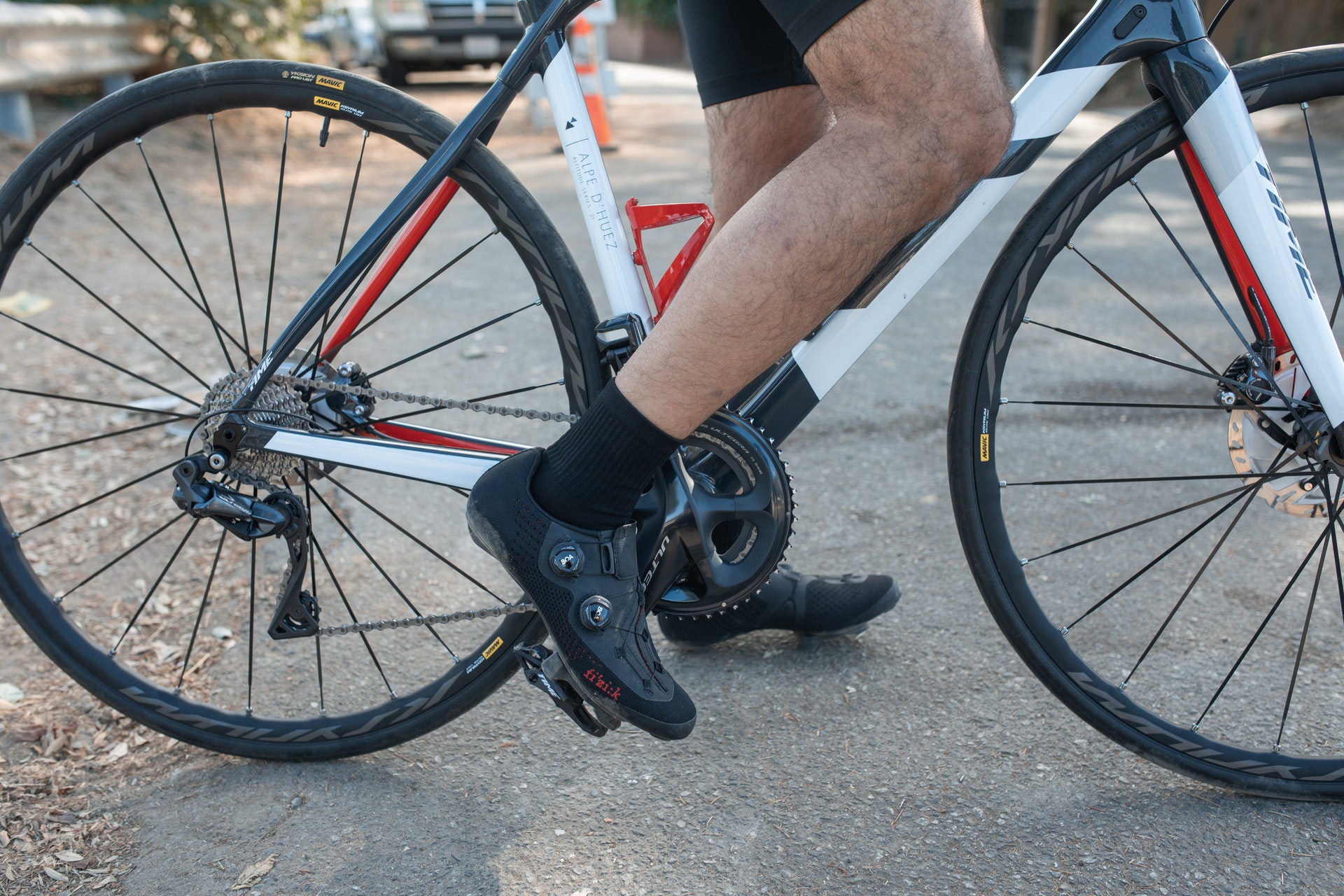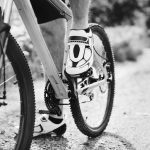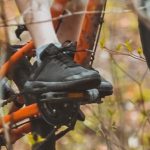When first starting mountain biking, you may hear experienced riders talk about wearing “clipless” shoes. This sounds confusing – how can shoes be “clipless” if they are used to clip into the pedals? While the name doesn’t seem to make sense, clipless shoes and pedals are very common on mountain bikes. They improve control, efficiency, and safety when riding trails. Here’s what you need to know about these special shoes.
Connection to the Pedals
Traditional flat pedals rely just on friction to keep your feet in position when riding. But clipless pedals actually attach directly to the soles of your mountain bike shoes using a cleat and binding mechanism. Your feet essentially lock into the pedals while riding but can click out easily when stopped. While it may feel insecure, this solid shoe-to-pedal connection offers many advantages on the trail.
The binding system provides a more stable and efficient pedal stroke compared to standard pedals. Because your feet attach rather than just rest, none of your energy gets wasted from your feet sliding around on the pedals. You maintain better control of the bike through rough sections. And being able to easily clip out of the pedals improves safety around tight turns or awkward dismounts.
Improved Power Transfer
One major advantage of clipless mountain bike shoes is how well they transfer power from your legs to the drivetrain. With the direct connection between your shoes and pedals, none of your pedaling force is wasted due to your feet slipping around or losing traction. You get full power delivery throughout the entire pedal stroke.
Besides making climbing more efficient, this precise pedaling platform helps maintain speed and momentum on level sections or descents. When your feet are solidly planted, you have way more control over the bike’s handling. No energy leaks occur during aggressive turns or over jumps where your feet would normally come off flat pedals. Clipless shoes and pedals form a solid bike-body integration for ultimate trail control.
Types of Mountain Clipless Systems
While the concept is the same, there are two main styles of clipless pedal systems used for mountain biking – road bike style and SPD style.
Road systems use a large cleat that attaches to smooth shoes similar to road cycling shoes. Pedals have a wide surface for the cleat to clip in. This style emphasizes maximum power transfer but can feel a bit less flexible and forgiving when walking around.
SPD clipless pedals (Shimano Pedaling Dynamics) utilize a smaller cleat attached to shoes with recessed cleat beds and aggressive lugged soles. The cleat engages with a smaller clip mechanism on the pedals. This style is more compact and easier to walk in than road clipless setups. Most mountain bikers prefer SPDs for the versatility.
Engaging and Releasing
The exact technique differs slightly between road and SPD systems, but the basic process goes like this:
- To engage clipless pedals, position your foot over the pedal and push down firmly until the cleat snaps into place. A solid click means you are clipped in securely.
- To release and get your foot free, angle your heel outward which twists the cleat mechanism and pushes your foot out. A bit of upward pull assists exit.
Don’t worry – it feels unnatural at first but the motions become second nature after a few rides. Setting the release tension properly also lets you find a sweet spot between staying clipped in through rough terrain but still being able to get out quickly when needed.
Walkability Factors
One concern people have about clipless mountain bike shoes is walking around off the bike. The protruding cleat on the soles can feel a bit insecure compared to rubber shoes. A few key factors help improve walkability with clipless:
- Recessed cleat design – Many shoes use an inset bed to sink the cleat below the sole slightly, giving more surface area to increase traction.
- Rubber soles – Aggressive lugs and soft rubber compound outsoles improve grip over wet rocks or bare floors.
- Removable cleat covers – Some clipless shoes let you swap cleat hardware for rubber traction pads when not riding to boost walkability even more.
While clipless shoes will never be quite as sure-footed as regular shoes, these features allow decent traction and stability for short distance hike-a-bike moves or walking around before/after rides.
Getting the Right Fit
Proper shoe fit is critical with clipless cycling shoes – they should feel snug but not overly tight. Too much room and your feet may shift or create hotspots. But too tight and you’ll lose circulation.
Start by determining if you need any special inserts or insoles to get optimum footbed support and arch fit. Then, try on several models and sizes with the same cycling socks you’ll use on the trail. Look for just enough wiggle room in the toe box without excess space. The instep and heel should be nicely secure with no slippage or binding.
With clipless shoes, arch and ankle fit influences pedaling efficiency. Making small adjustments for personal foot volume, shape, and cleat position really allows you to dial in a customized fit with no wasted motion or hotspots. Getting the right fit takes some trial and error, but pays off with best-possible power transfer and no foot pain on rides.
Casual and Downhill Options
While many clipless shoes have a somewhat modern, almost sneaker-like style these days, there are still performance categories to consider. Cross-country and trail riders generally choose lightweight shoes with climbing efficiency prioritized over foot protection.
But gravity riders doing more downhill, freeride, or bike park riding may want burlier, well-protected shoes that emphasize durability and armor. These downhill/freeride shoes have more substantial soles, toe caps, and impact zones able to withstand crashes and rock strikes. They trade a bit of off-the-bike mobility for holding up better in harsh conditions versus just XC trail use.
There are also “casual” SPD style clipless shoes aimed at around-town cyclists and recreationalists. These maximize walkability by integrating SPD clips into shoes that look like normal skate shoes or trail hikers. While not quite as stiff as mountain biking clipless shoes, the casual versions blend sneaker comfort with basic clipless pedal functionality for more casual use.
Learning the Technique
Transitioning from flat pedals to clipless takes some technique changes, but most riders consider it very worthwhile. The shoes force you to use proper pedaling form without bouncing or floating feet. This engages abdominal and core muscles more fully too. Most novices report feeling more “connected” and in control with the locked-in shoes right away.
That said, practice is required to get comfortable with releasing your feet at stops. Experienced riders advise doing that over soft grass at first. Start seated and get used to that slight heel twist out before moving on to harder bails or dismounts. Once muscle memory kicks in, your safety and control will improve dramatically.
Many find their overall efficiency and mileage increasing after switching to clipless too. Not wasting energy from pedal stroke sloppiness allows going farther for the same effort. So take the time to learn proper technique – it pays off with much more fun shredding trails through every season.
While the name “clipless” remains confusing, the clipless pedal system provides a huge advantage on the trails versus old-school toe clips or flat pedals. No other connection transfers power or gives handling confidence like the locked-in integration of clipless shoes and pedals. With so many options tailored for cross-country, trail riding, downhill, and even casual use, clipless shoe technology helps advance riding performance to the next level. Give them a shot, and you’ll never want to ride trails on flat pedals again.






